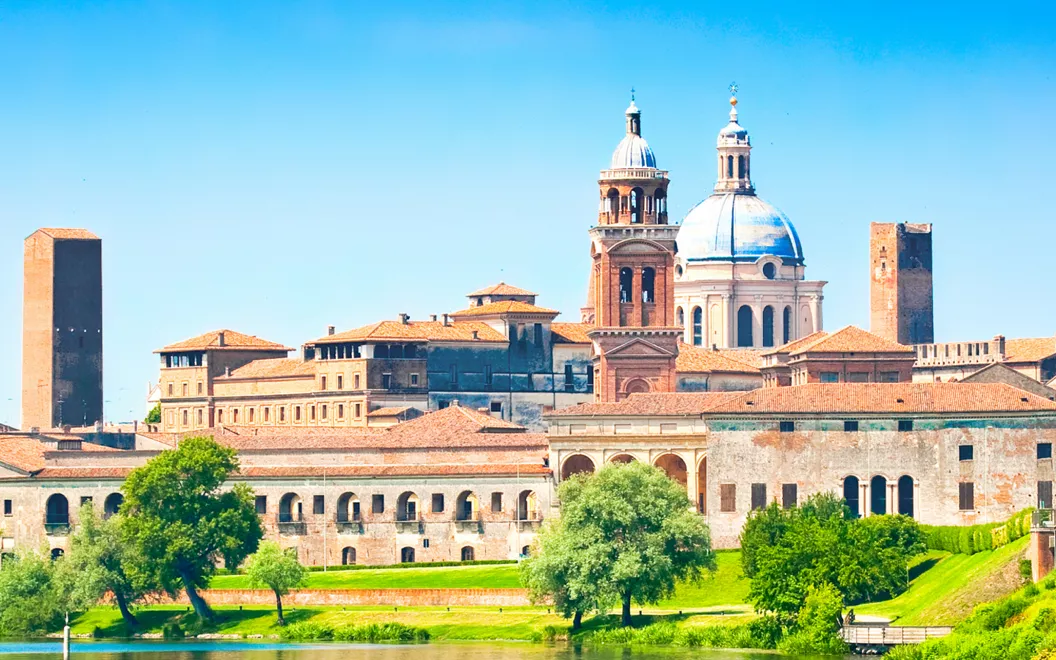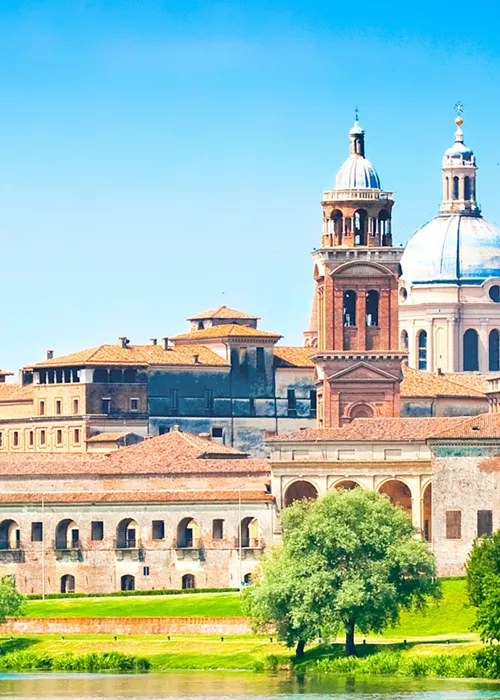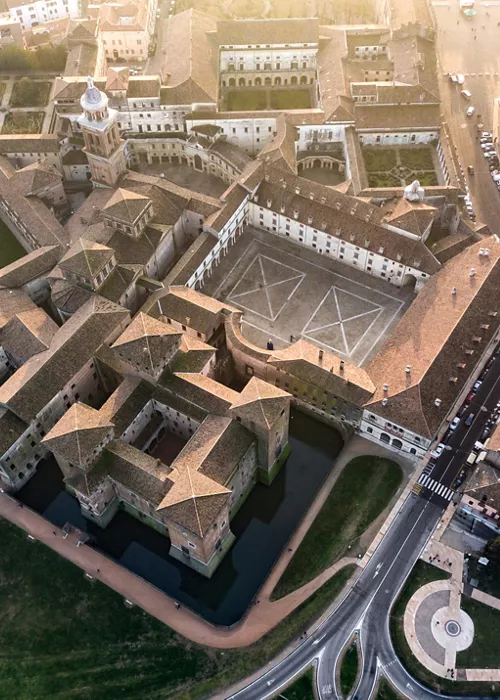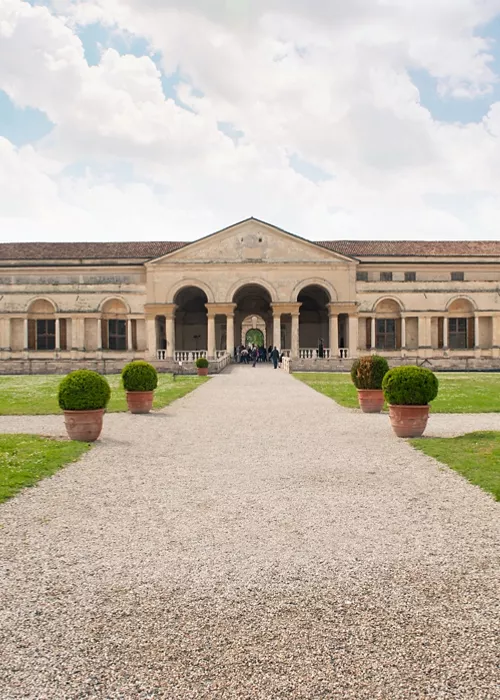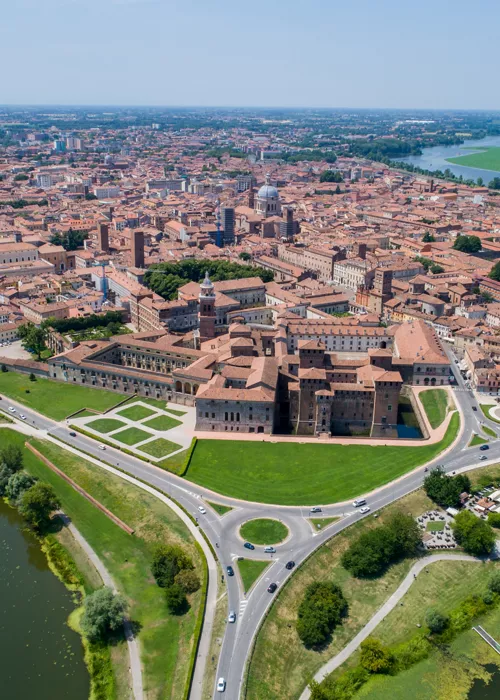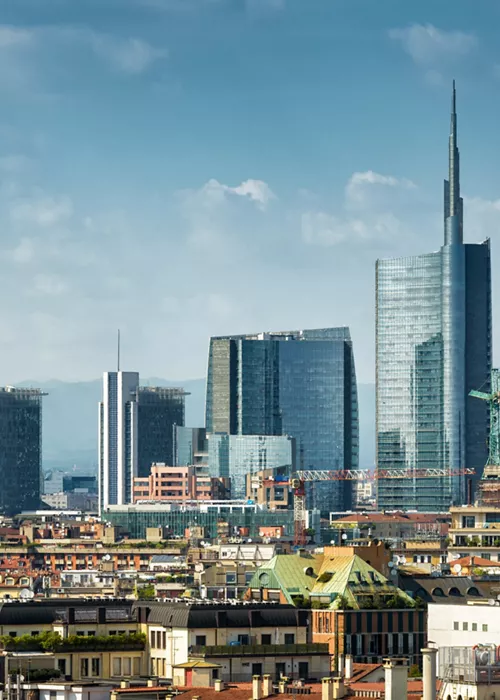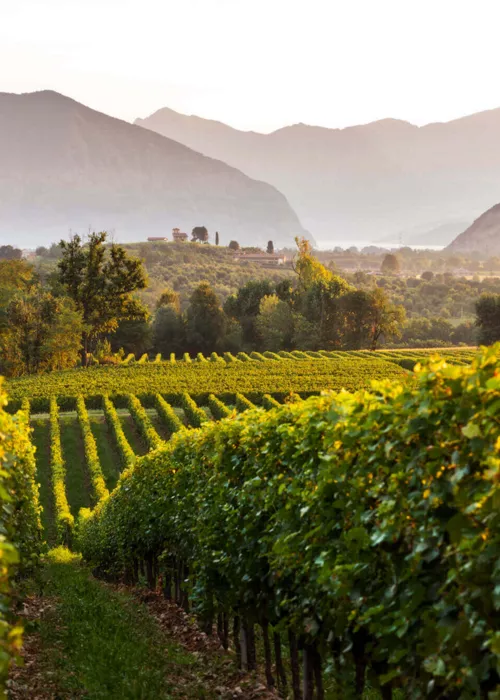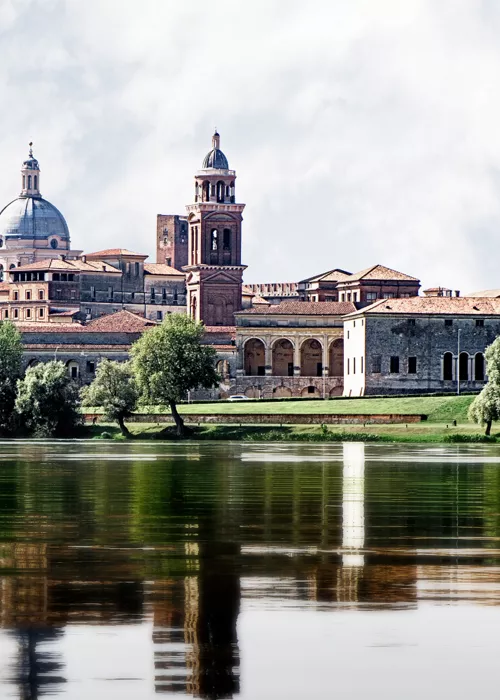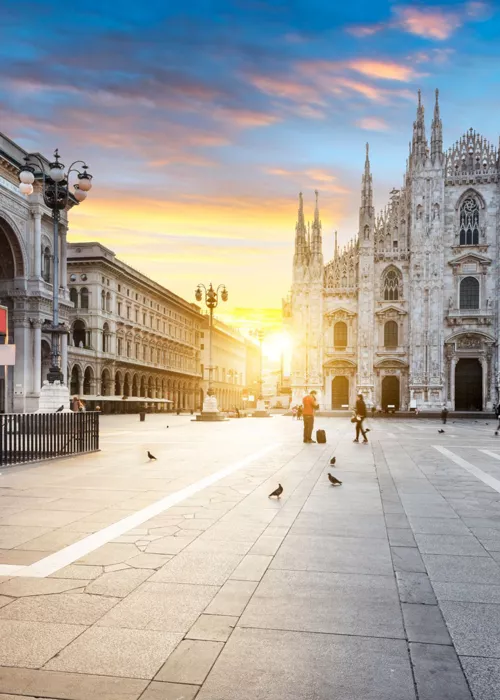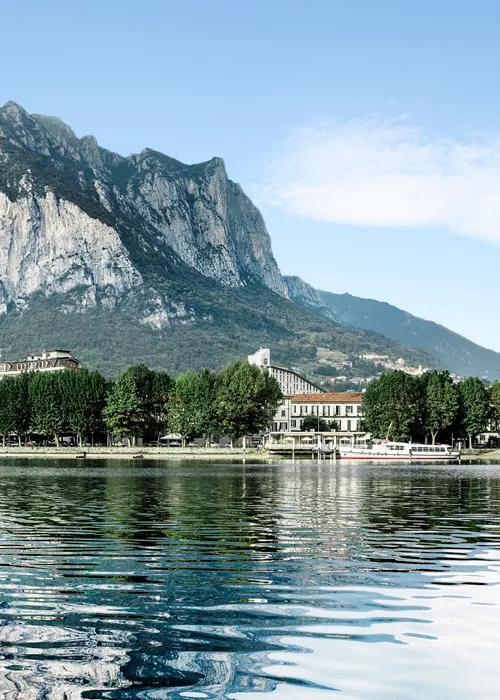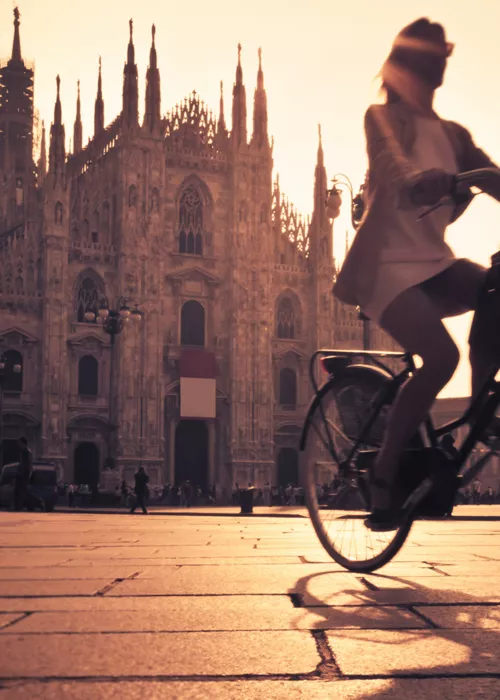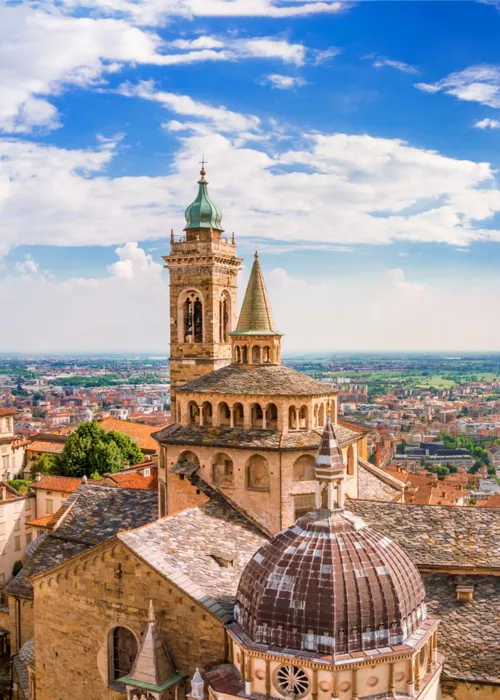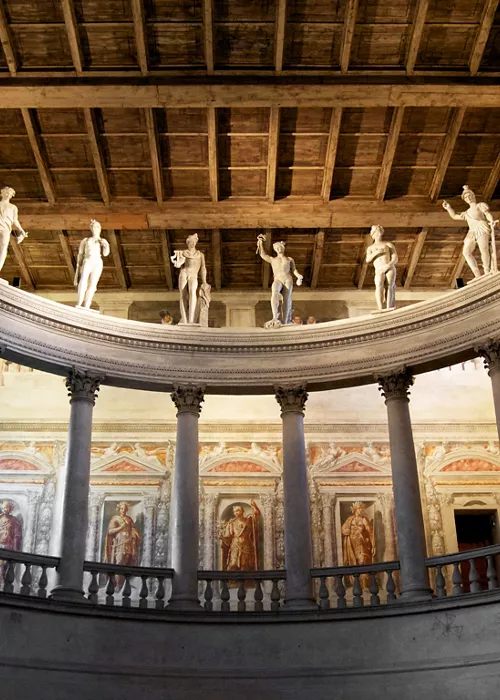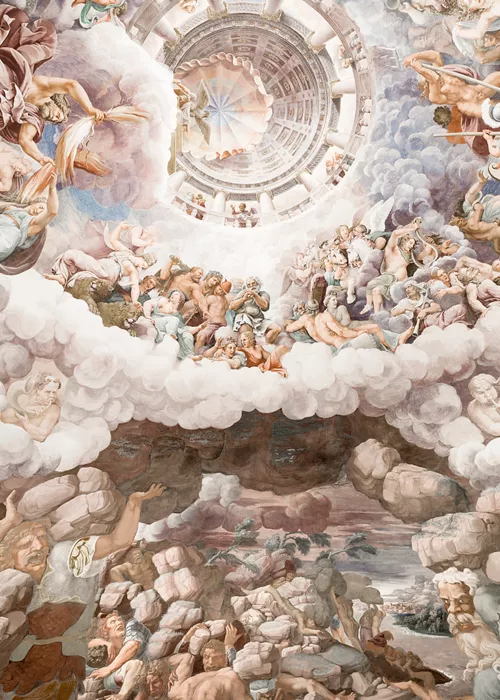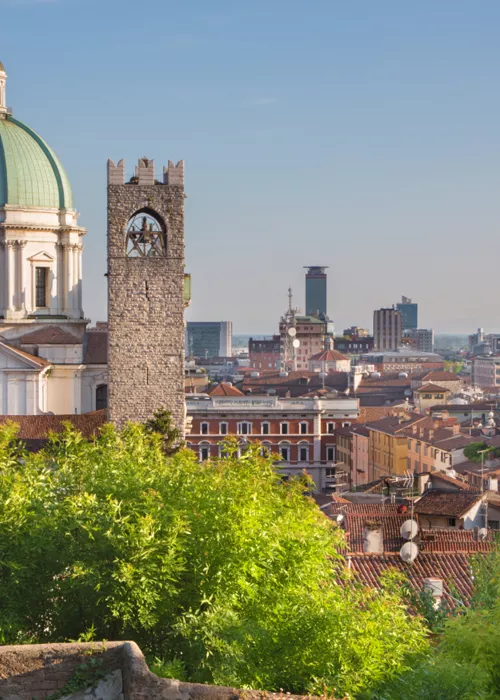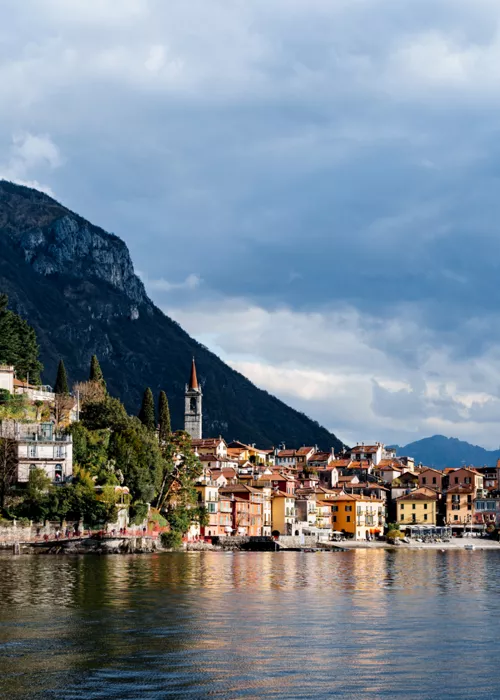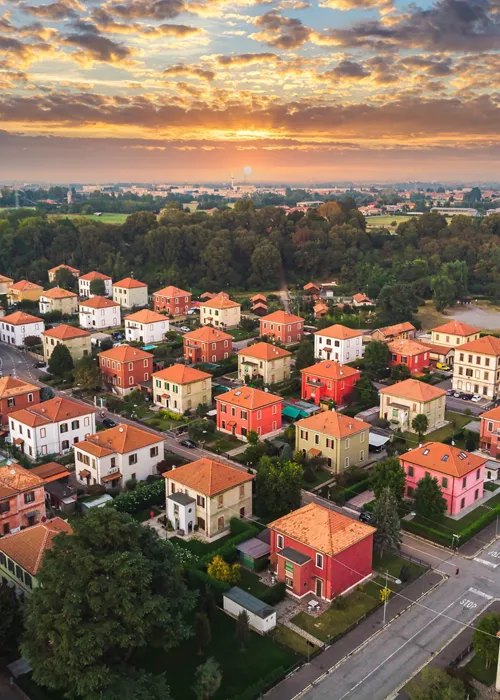Mantua, an aristocratic city steeped in art and history
4 minutes
Surrounded by lakes and environment rich in nature, art and history, Mantua was transformed by the Gonzaga family into a court-city of great opulence: echoes of its past can be seen in the courtyards, small squares and porticoes that recall the splendours of 16th-century courts.
The combination of Renaissance palaces, medieval buildings and imposing neoclassical architecture creates a unique cityscape to be admired in all its length and breadth.
Mantua is a vibrant and lively city and hosts the annual Literature Festival and attracts many curious tourists who inevitably fall in love with it.
The history and magic of Mantua

Mantua's history harks back to ancient times and is probably of Etruscan origin. The founder, the hero Onus, is said to have dedicated the city to the male deity Mantus. First occupied by the Gauls and then by the Romans, it became a colony where Christianity then spread. After the fall of the Roman Empire, medieval Mantua was invaded by the Goths, Byzantines, Lombards and Franks until it became one of the feudal domains of the Canossa family. Later, it became a free commune: it defended itself against the imperial forces while expanding, building magnificent buildings and fortified city walls.
During the period of struggles between the Guelphs and Ghibellines, Pinamonte Bonacolsi conquered Mantua and made it a thriving town rich in art. This lordship, or signoria, ended in 1323 with the death of Rinaldo known as Passerino, the little sparrow, and which gave rise to the Gonzaga lordship. The Gonzaga made Mantua a jewel of great splendour and artistic value and built the most magnificent buildings. Many illustrious names frequented the Gonzaga court, including Ariosto, Tasso, Correggio and Titian.
Ludovico II welcomed new Renaissance art to the Gothic city, hosting Brunelleschi, Mantegna and other renowned artists, and the architect Giulio Romano organised a major urban redesign.
After being besieged and conquered by Napoleon, Mantua returned to Austrian rule in 1814: the people of Mantua responded to the rulers' oppression with liberal uprisings. In 1866, Mantua became part of the Kingdom of Italy.
What to see in Mantua: 3 must-see places
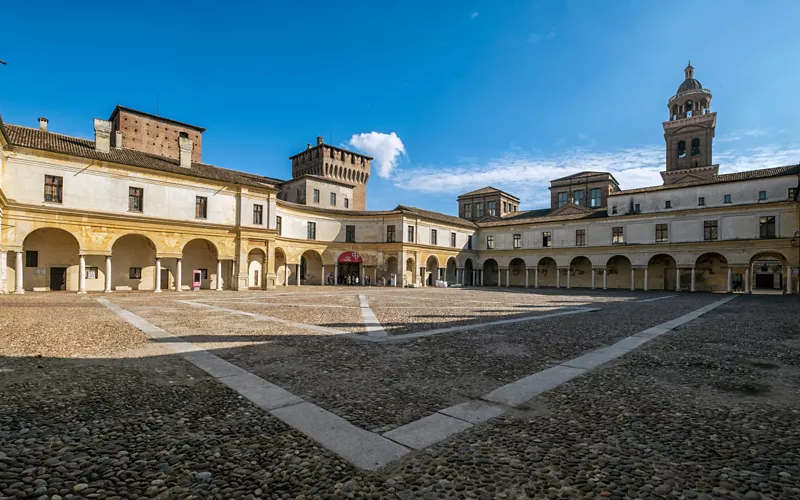
"This is a beautiful city, worth seeing even if you have to travel a thousand miles". This is how Torquato Tasso described Mantua: a city that deserves to be visited even if it means a very long journey. Home of Virgil and guardian of Mantegna's masterpieces, Mantua has been a UNESCO World Heritage Site since 2008 and was the Italian Capital of Culture in 2016 and offers many points of interest. What to see in Mantua to not miss out on anything Here are the first three attractions.
Start with Mantua’s architectural masterpieces: the first stop is the Palazzo Te of Mantua. There are two theories about its name: for some, it derives from the name of the island Teieto, not far from where the city arose. For others, it is due to its location at the junction of two roads that create a large T. Built by Giulio Romano, it is the perfect opportunity to get lost in the beauty of the palace's gardens, facades and rooms.
Continue with Mantua’s Royal Palace: the second stop can only be at the Ducal Palace in Mantua, a residence of more than 500 rooms where the Gonzaga family lived and ruled among courtyards, rooms, gardens and marvellous frescoes.
Finally, Mantua’s Timepiece: the last unmissable stop is the Clock Tower. A Renaissance construction commissioned by the Gonzaga family, it dominates the Piazza delle Erbe and has an interesting exhibition of the objects and gears that have been replaced over time.
What to do in Mantua: 3 ideas
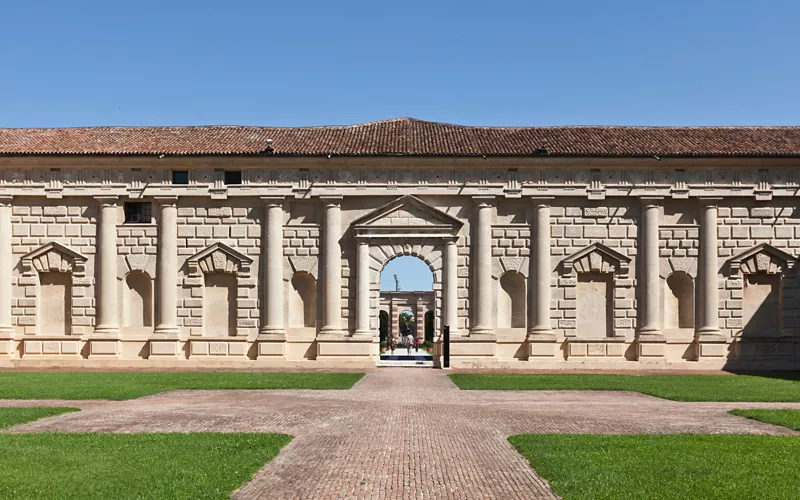
Enchanting, calm, full of palaces, churches, museums and places of interest, this pearl of Lombardy is ideal for keeping the whole family entertained. What to do in Mantua to entertain younger and older visitors?
Of course, avid readers and art lovers cannot miss the Literature Festival in Mantua, an event held in the first days of September with meetings with authors, readings, concerts, performances and art installations.
For everyone, we recommend the guided tours of the Palazzo del Te of Mantua that allow you to better appreciate its history and value thanks to the knowledge of expert guides.
Finally, for those who like to walk, a Mantua Walking Tour: a guide will show you the city's main points of interest along the way.
What to eat in Mantua: 3 specialities

Mantuan cuisine is still rich in traditional dishes dating back to Gonzaga times. With strong ties to the countryside, it is flavoursome, rich and varied, is stands out for its Emilian and Lombard influences. What to eat in Mantua?
- First of all, Pumpkin tortelli: irresistible pasta filled with sweet pumpkin and Mantuan mostarda - a mustard-infused quince condiment.
- Then the torta sbrisolona, a crumbly cake made with corn flour and generous amounts of butter and almonds.
- And last but not least, risotto alla pilota: a strong dish with pork, salamella sausages, and Grana Padano hard cheese. Not the lightest of dishes, but delicious nonetheless.
Unique places in Mantua:
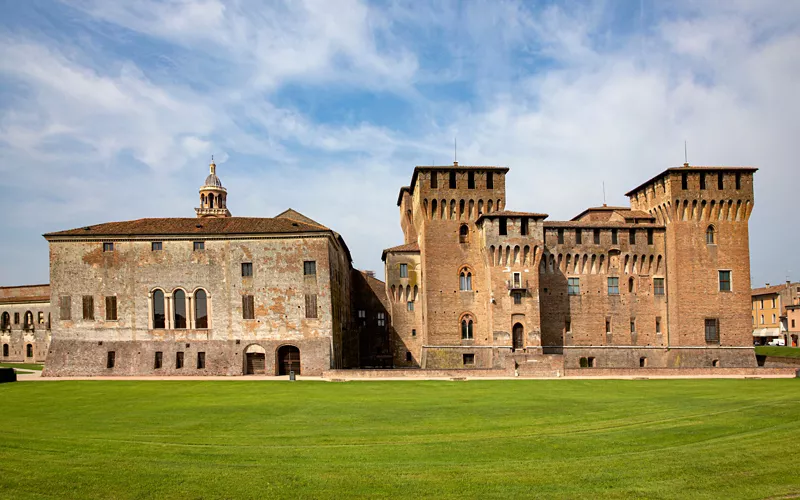
There never seems to be enough time when visiting a city as rich and multifaceted as Mantua: but you'd be best advised to find some time to devote to its unusual places. Starting with the Bridal Chamber, a room in the north-east tower of the Castle of San Giorgio di Mantova, famous for the cycle of frescoes covering its walls, a masterpiece by Mantegna.
The list wouldn’t be complete without the Sala del Labirinto (Labyrinth Room), which will leave you stunned: it is a ceiling in the Domus Nova, inside the Doge's Apartment, in which to lose yourself with your gaze while contemplating its convoluted structure.
Finally, the Apartment of the Court Dwarfs: its rooms, long considered to be the residence of the famous Gonzaga dwarfs, have curious low, coloured ceilings.

